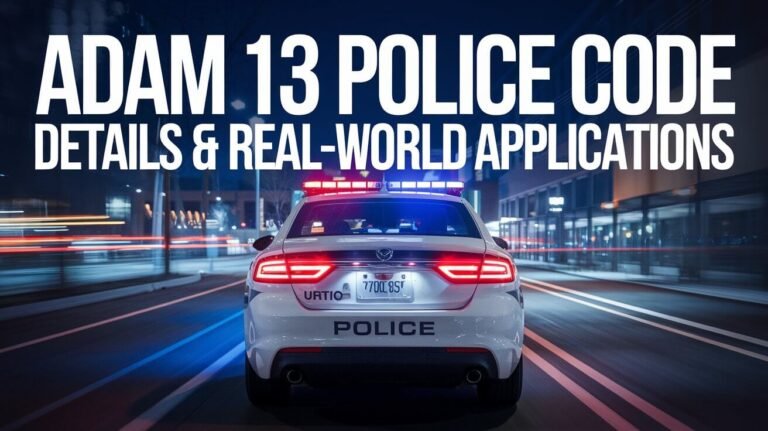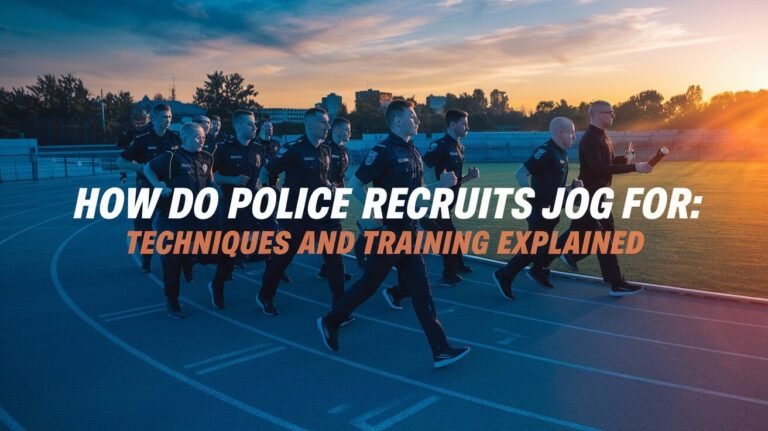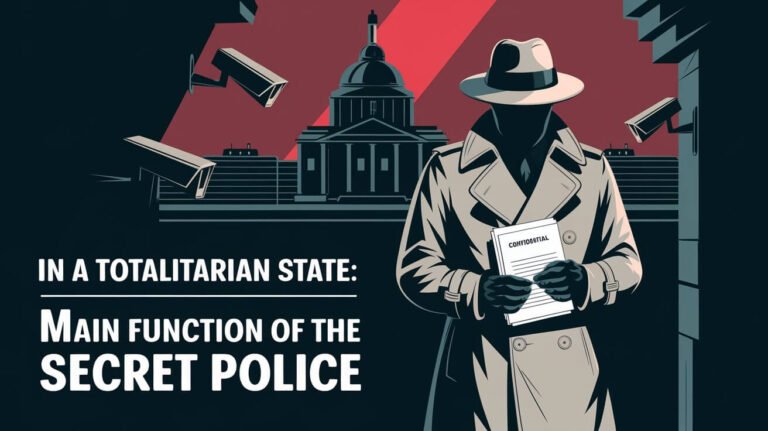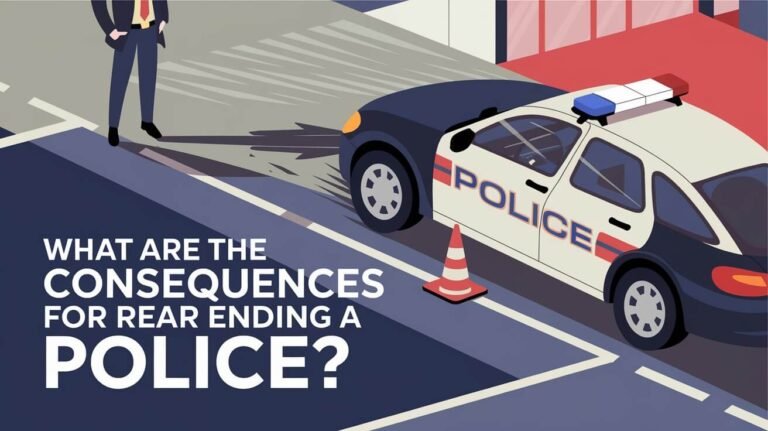Does Baltimore School Have Police Department in 2025?
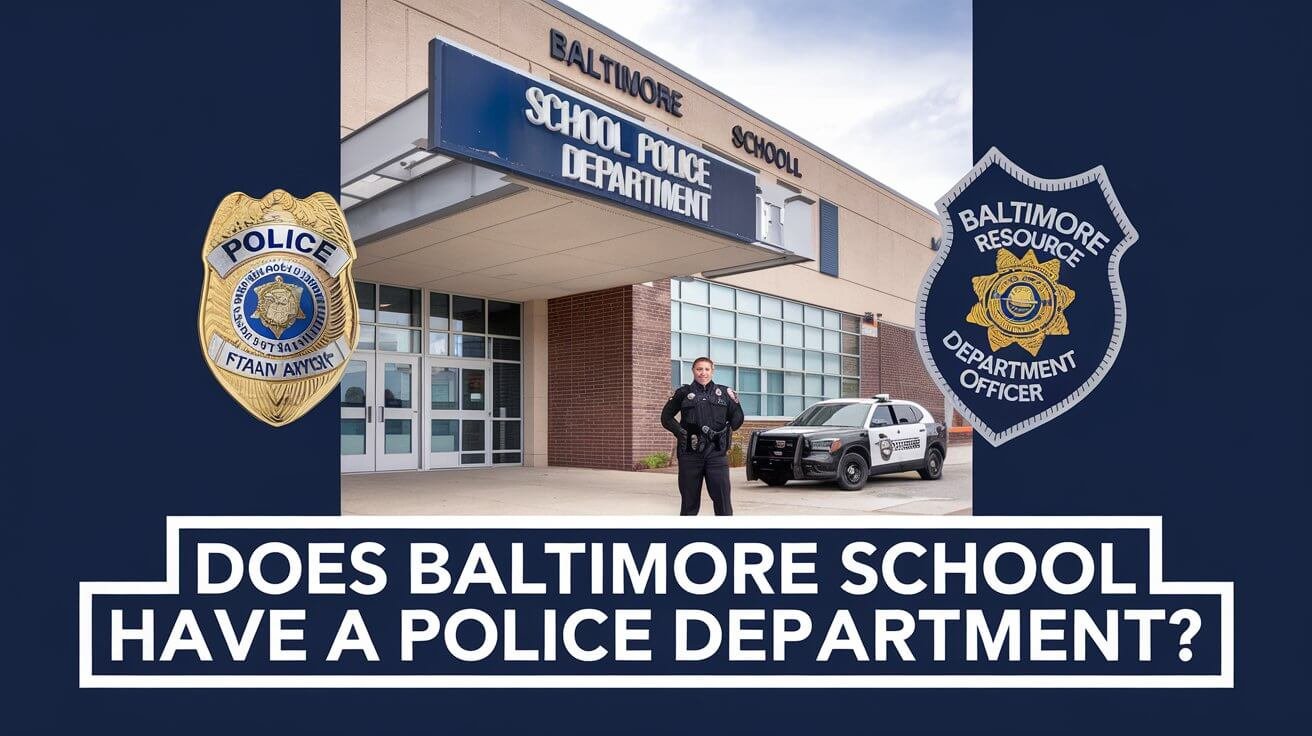
The debate on police in schools is ongoing. Some say police keep schools safe, while others think it’s not helpful. In Baltimore, the school police department is key to keeping schools safe. They focus on making sure schools are secure places to learn.
The Baltimore City Police Department’s structure and community involvement are well-documented. This gives insight into their role in school safety.
Baltimore school police department focuses on keeping schools safe and orderly. They aim to create a secure learning environment. This ensures students and staff feel safe and supported.
As the debate on police in schools continues, understanding the Baltimore school police department’s role is vital. It helps maintain school safety and contributes to the well-being of the school community.
Baltimore School Police Force Overview
The Baltimore school police force keeps schools safe and orderly. It has a chief, deputy chiefs, and officers at each school. Knowing how the force is set up is key to keeping schools safe.
Department Structure and Jurisdiction
School police force has a clear structure. This lets it work well within its area. It helps officers talk and work together, keeping schools safe.
Responsibilities and Deployment
The force does many things to keep schools safe. They keep order, handle emergencies, and help students and teachers. They use both uniformed and plainclothes officers for different jobs. Some main tasks are:
- Maintaining safety and security in schools
- Responding to incidents and emergencies
- Providing support to students and staff
Historical Background of School Policing in Baltimore
The history of school policing in Baltimore is a story of growth. The Baltimore City School Police force started in 1991. It’s the only sworn school police force in the state. This change marked a big shift, from just keeping order to supporting students and staff.
The Baltimore City Police Department’s website shows police in schools for decades. The school policing history in Baltimore is linked to the city’s long police history. Over time, more police were added to schools to keep them safe and orderly.
Some key facts about the Baltimore City School Police force include:
- The force has full arrest powers within city limits.
- It costs nearly $6,000 to equip each school police officer.
- In the 2015–16 school year, Baltimore City School Police arrested 90 students, with 89 of them being Black or African American.
The school policing history in Baltimore is complex. The police presence in schools has been shaped by many factors. These include the city’s policing history, the school system’s growth, and community needs. Today, the Baltimore school police force focuses on keeping schools safe. Its history shows the city’s ongoing efforts to create a safe learning environment for all students.
| Year | Number of Arrests | Percentage of Black or African American Students |
|---|---|---|
| 2015-16 | 90 | 99% |
Current Status of School Police Programs
The school police programs in Baltimore are complex. They aim to keep schools safe and orderly. These efforts are vital for creating a secure learning environment for students.
Officer Responsibilities and Coverage Areas
Officers in these programs handle incidents, support students and staff, and are visible in schools. They cover all public schools in Baltimore and some private ones. The Baltimore County Police Department’s website has details on their services, including school programs.
Operational Hours and Program Details
How long school police programs run varies by school and community needs. Some notable efforts include the BCPS Tuition Free Program. It helps 11th and 12th graders with tuition, fees, and books if they meet certain standards.
The BCPS Summer Food Service Program also offers free meals during summer weekdays. This includes breakfast and lunch.
| Program | Description |
|---|---|
| BCPS Tuition Free Program | Covers tuition, fees, and books for students in 11th and 12th grades who have met College and Career Readiness Standards |
| BCPS Summer Food Service Program | Offers free breakfast and lunch meals on weekdays during the summer months |
School Safety Protocols and Enforcement
School safety in Baltimore aims to prevent and handle incidents. This ensures a safe place for students to learn. Metal detectors, security cameras, and emergency plans are part of these efforts. The school police enforce these rules, working with school leaders and others to keep schools safe.
Having police in schools is key to safety. In Baltimore, 86 School Resource Officers (SROs) help out. They are trained to deal with problems and support students and staff. Also, all school doors are locked during school hours. And, 14 out of 27 open areas are now safer and more secure.
Here are some important steps for school safety:
- Electronically controlled entry systems
- Interior and exterior cameras
- Visitor identification systems checking the sex offender registry
- A standardized identification system for staff and students known as the One-card system
These steps show Baltimore’s dedication to a safe learning environment for students.
Budget and Resource Allocation
The Baltimore County Police Department’s budget is key to its school policing success. The FY 2023 budget is $280.0 million, a 4.3% increase from FY 2022. This money comes from federal, state, and local funds, plus private donations and grants.
Most of the budget goes to salaries, benefits, and training for officers and staff. The department also plans to spend on equipment like uniforms, vehicles, and technology. They’ve set aside $1.3 million for a new patrol car program and $2.0 million for 26 new positions.
Annual Funding Breakdown
- General Fund: $250.3 million
- Special Fund: $29.6 million
- Personnel expenses: $236.8 million (approximately 91% of the General Fund budget)
The department’s budget and resource allocation are vital for keeping schools safe. Understanding these aspects helps everyone see the importance of managing resources well.
| FY 2023 Budget | General Fund | Special Fund |
|---|---|---|
| $280.0 million | $250.3 million | $29.6 million |
| Personnel expenses | $236.8 million | N/A |
Training Requirements for School Officers
In Baltimore, school officers get special training for school challenges. They learn crisis intervention, de-escalation, and cultural competency. This helps them handle school situations well.
The Maryland Safe to Learn Act of 2018 requires school officers to take a week-long training. It’s from the Maryland Center for School Safety (MCSS). They learn about de-escalation, disability awareness, and more.
Some key training points for Baltimore school officers include: * They must finish a 40-hour curriculum by September 1, 2019. * They take a week-long training from MCSS. * Topics like de-escalation and diversity awareness are covered. * New officers must start training by the next school year. * Funding comes from local budgets, shared funds, or MCSS grants.
| Training Requirement | Description |
|---|---|
| 40-hour model curriculum | Completion of a 40-hour model curriculum or approved local training by September 1, 2019 |
| Specialized training | Participation in a week-long specialized training developed by the MCSS |
| Funding | Availability of funding for SRO programs through local law enforcement agency budgets, shared funding, or grants offered by MCSS |
Having police in schools is key for safety. Baltimore’s training ensures schools are safe. This lets students focus on learning.
Community Response to School Police
The community’s view on school police in Baltimore is varied. Parents, students, and teachers share different opinions. Their feedback is key to understanding how school policing works.
Parents worry about safety and the police’s role in schools. Students have mixed views, from supporting police to fearing racial bias. Teachers talk about how police affect learning and the need for support.
Stakeholder Feedback
- Parent concerns about safety and security
- Student opinions on police presence and racial bias
- Teacher perspectives on police impact on the learning environment
Looking at community feedback helps us grasp the role of police in schools better. This insight can guide policy changes. It aims to make schools safer for everyone.
Safety Statistics and Impact Data
Police in schools make a big difference in safety. A recent survey found that 69% of students think police make their schools safer. This is a big jump from last year’s 61%.
Some important points from the survey are:
- 66% of students believe police protect and secure their schools.
- 65% of students mention challenges with having police in schools.
- Nearly 90% of school police want more training for crises.
The data also shows that the Safe Streets program has worked well. It led to a 23% drop in nonfatal shootings and a 32% drop in homicides. These numbers highlight the good effects of police and community programs on safety.
| Program | Reduction in Homicides | Reduction in Nonfatal Shootings |
|---|---|---|
| Safe Streets | 32% | 23% |
Police in schools can improve safety and order. But, there’s room for better training and fairness in discipline and enforcement.
Partnership with Baltimore City Police
The school police department and the Baltimore City Police Department work together to keep students and staff safe. They share ideas and plans to respond quickly in emergencies. This teamwork makes sure everyone feels secure.
The collaborative initiatives include:
- Joint training programs to enhance the skills and knowledge of officers
- Shared resources to improve response times and effectiveness
- Coordinated responses to incidents to minimize disruption and ensure public safety
Emergency Response Protocols
They have plans for many situations, like active shooters or natural disasters. These plans are always being updated. This shows their dedication to keeping everyone safe.
Policy Changes and Recent Developments
Baltimore Police Department has made big changes to improve its services. These changes include new rules on how officers use force and how to handle situations peacefully. They also focus on understanding different cultures, which helps the police connect better with the community.
Recently, the department started using body-worn cameras and expanded mental health services. They also launched new programs to reach out to the community. These steps show the department’s dedication to being open, responsible, and involved with the people of Baltimore.
Some key changes and new steps include:
- Improved use of force policies to ensure officer and community safety
- Enhanced de-escalation techniques to reduce conflict and promote peaceful resolutions
- Increased cultural competency training to foster greater understanding and empathy among officers
- Implementation of body-worn cameras to promote transparency and accountability
- Expansion of mental health services to support officers and community members
These efforts show the department’s commitment to meeting the community’s changing needs. They aim to make the police presence in Baltimore more effective and responsive.
| Initiative | Description | Impact |
|---|---|---|
| Body-worn cameras | Implementation of body-worn cameras to promote transparency and accountability | Increased trust and confidence in police interactions |
| Mental health services | Expansion of mental health services to support officers and community members | Improved well-being and reduced stress among officers and community members |
| Community outreach programs | Creation of new community outreach programs to foster greater engagement and understanding | Enhanced relationships between police and community, promoting mutual trust and respect |
Alternative Security Measures
Schools in Baltimore are looking into new ways to keep students safe. They are using prevention programs and security technology. These steps help lower the chance of violence and make schools better places for learning.
Prevention Programs
Prevention programs are key to keeping schools safe. They include things like restorative justice, social-emotional learning, and conflict resolution. Here are a few examples:
- Restorative justice programs to resolve conflicts and promote positive relationships
- Social-emotional learning programs to teach students skills such as empathy and self-awareness
- Conflict resolution programs to provide students with tools to manage conflicts effectively
Security Technology
Security technology is also vital for school safety. This includes metal detectors, security cameras, and alarm systems. These tools help prevent threats and respond fast if something happens. Some examples include:
| Security Measure | Description |
|---|---|
| Metal Detectors | Used to detect and prevent the entry of weapons into schools |
| Security Cameras | Used to monitor and record activity on school premises |
| Alarm Systems | Used to alert authorities and school staff in the event of an incident |
Using both prevention programs and security technology, Baltimore schools can make a strong plan for safety. This plan focuses on keeping students and staff safe and happy.
Wrap-Up Thoughts
As we wrap up our look at the Baltimore school police, it’s clear that keeping schools safe is a big job. It needs everyone working together. The data shows the Baltimore Police Department is making schools safer. They’re working with schools, parents, and the community to make sure students can learn without worry.
The statistics show fewer arrests and First Amendment issues, meaning the police are being more careful in schools. They’re also following rules to be open and answerable to the community. This shows they really care about being fair and open.
The work done in Baltimore is a good example for others to follow. By keeping police in schools but focusing on safety, schools can be places where students do well. This helps students learn and grow in a safe and supportive place.
Questions We Get Asked
What is the structure of the Baltimore school police force?
The Baltimore school police force has a chief and deputy chiefs. It also has officers at specific schools. They cover all public and some private schools in Baltimore.
What is the history of school policing in Baltimore?
School policing in Baltimore started in the 1960s. The police first assigned officers to schools. Now, they do more than just keep order. They also support students and staff.
What are the current responsibilities and coverage areas of the school police department in Baltimore?
The school police in Baltimore keep schools safe and handle incidents. They also support students and staff. They cover all public and some private schools in the city.
What are the school safety protocols in Baltimore and how are they enforced?
Baltimore schools use metal detectors, cameras, and emergency plans for safety. The school police enforce these rules. They work with school admins and others to keep schools safe.
How is the budget and resource allocation for the school police department in Baltimore structured?
The school police budget comes from federal, state, and local funds. It also includes private donations and grants. The money goes to salaries, equipment, and more.
What are the training requirements for school officers in Baltimore?
School officers in Baltimore get special training. They learn about crisis intervention, de-escalation, and cultural competency. This prepares them for school challenges.
How does the community respond to the presence of school police in Baltimore?
The community has mixed feelings about school police. Parents, students, and teachers have different views. Their opinions help understand the impact of school policing.
What safety statistics and impact data are available for the school police department in Baltimore?
The data shows police in schools improve safety. Crime rates drop and response times get better. But, there are areas for improvement, like fairness in discipline.
How does the school police department in Baltimore partner with the Baltimore City Police Department?
The school police and Baltimore City Police work together. They share information and support each other. This helps them respond better to emergencies.
What policy changes and recent developments have affected the school police department in Baltimore?
New policies and developments have changed the school police. There are rules on force, de-escalation, and cultural competency. They also use body cameras, expand mental health services, and start community programs.
What alternative security measures can be used in schools instead of police presence?
Schools can use prevention programs and technology for security. Programs like restorative justice and social-emotional learning help. So do metal detectors, cameras, and alarms.

